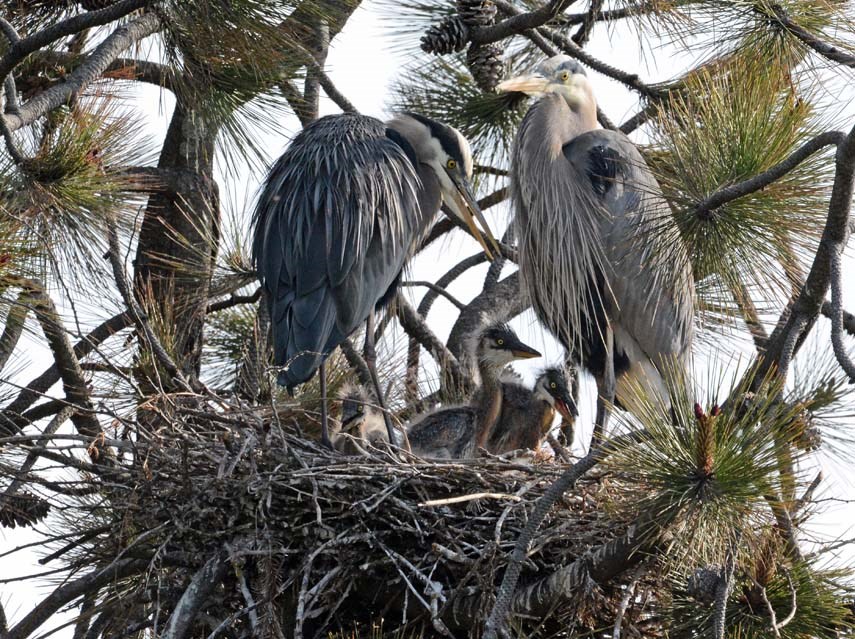Spring is here and that means an explosion of flowers and baby birds.
West Vancouver, particularly the area formed by the combination of the Ambleside beach, pond, the Capilano River estuary, streams, mature trees, and grassy areas, is a treasure trove for the bird watcher and photographer.
The lady mallards are usually the first off the mark, producing batches of up to 10 chicks. These cute little balls of fluff with oversized feet and bills, but tiny under-developed wings, are almost immediately able to swim, walk and forage for themselves in the water and on land. The male mallard plays little or no role in protecting the chicks, and the females, although much more attentive are sadly not very effective in preventing the chicks becoming fodder for predators.
After a few days it is common to see a mother mallard shepherding around just one or two chicks.
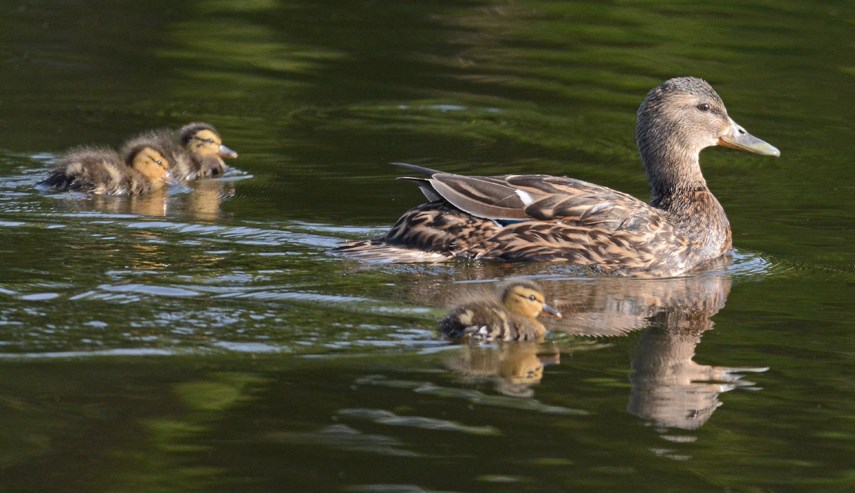
About the same time the Canada geese are producing clutches of up to nine goslings. Like the mallard chicks, these are capable of fending for themselves from almost the time of hatching. Parenting and protection strategies are distinctly better than those of the mallards. Both parents stay with the chicks, guiding them from one feeding area in fresh or salt water or grazing on land.
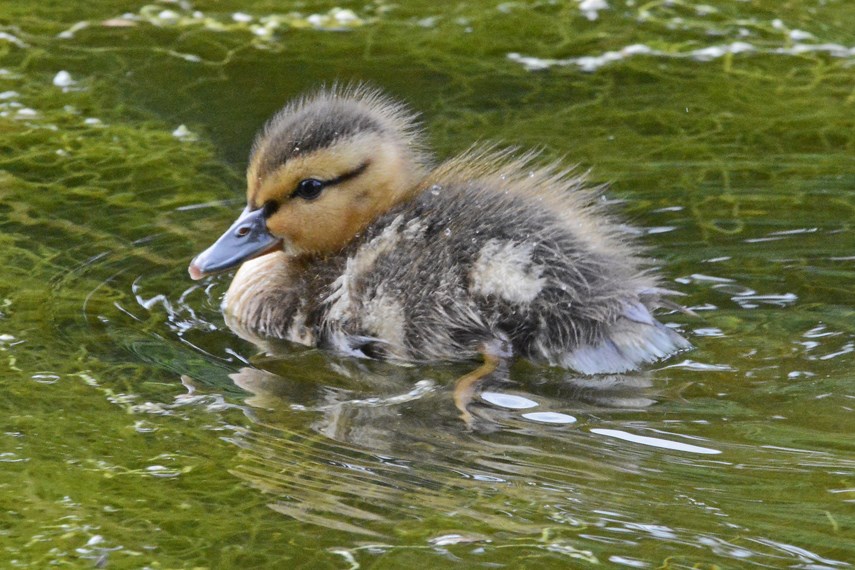
An amusing sight is when two or more pairs of parents team up with other families and they waddle off on walks with a number of adults and a horde of offspring.
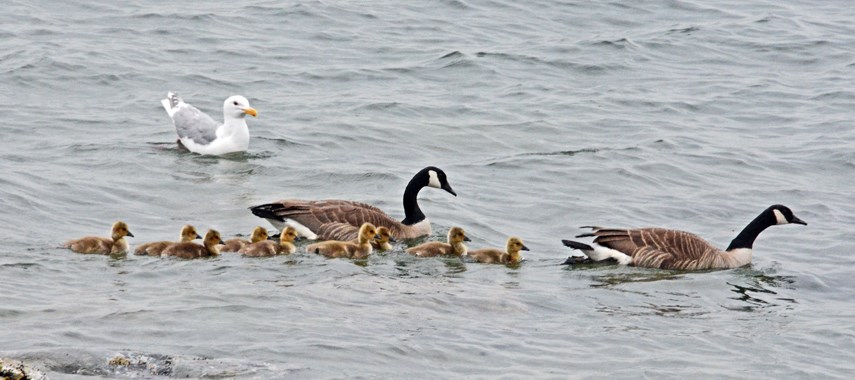
In the winter months, the trees around the Ambleside pond are festooned with herons. They seem to do very little except roosting motionless for hours except for occasional bursts of preening. In the early spring most disappear to nest and breed presumably in heronries such as that in Stanley park. This year one pair opted to build a conveniently visible nest in a pine tree at the pond and about three weeks ago produced a clutch of three chicks.
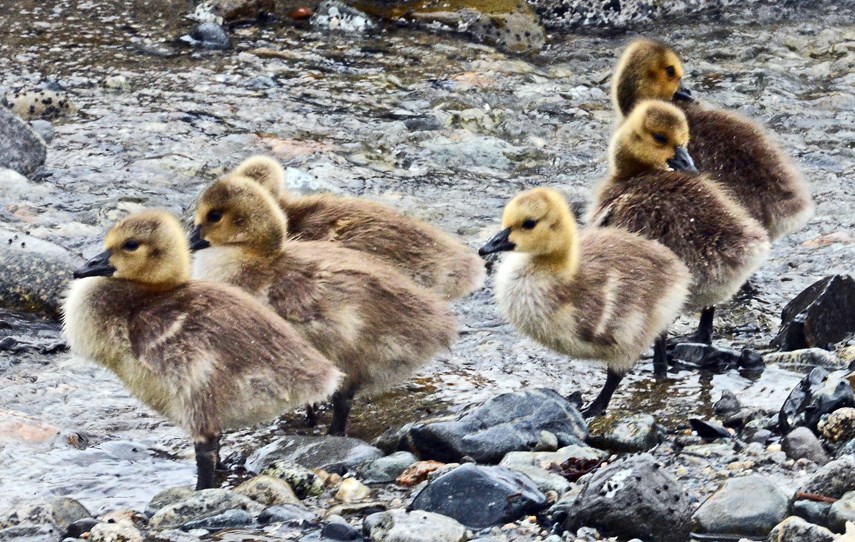
The parents take turns at the nest and are sometimes there together. This observer has seldom seen feeding occurring, but the young are growing apace.
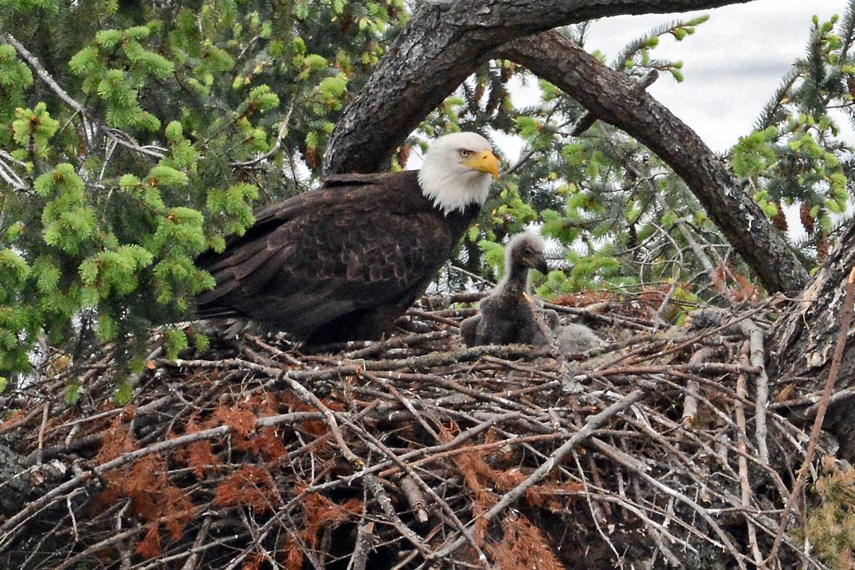
West Vancouver has its share of breeding eagles although these are difficult to observe because the nests are usually so high. They often produce a pair of eaglets. Parenting when these are little balls of yellow fluff is strict, with one or both adults being present and feeding them with regurgitated material. As the chicks get bigger and turn gray, the parents may leave them on their own for periods, returning with more substantial food such as a fish or another type of bird which they rip to shreds and feed the young.
But what of the swans – the pride of the pond? The female hasn’t been seen for a few weeks, no doubt incubating her eggs. The male is assiduously patrolling the pond keeping other aquatic birds away from the swans’ nesting area on the small island. Keen pond-watchers are eagerly awaiting the cygnets and laying bets on how many there will be.
